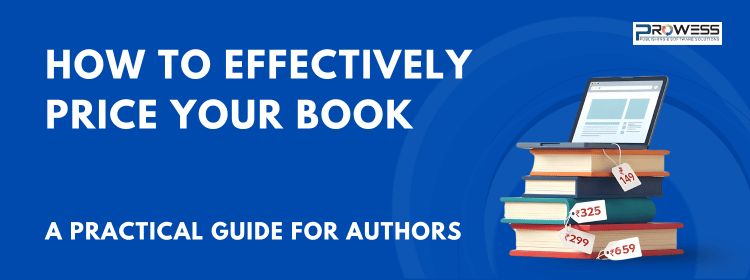
Pricing your book is one of the most crucial decisions you’ll make as an author. Whether you’re self-publishing your first title or adding another to your growing collection, the right pricing strategy can make a significant impact on your visibility, sales, and long-term success.
At Prowess Publishing, we often guide authors through this tricky but essential part of the publishing process. Here’s a comprehensive look at how to effectively price your book.
1. Understand Your Market and Genre
Every genre has a standard pricing range. For instance:
Fiction paperbacks generally range between ₹250–₹400
Non-fiction and academic books can go up to ₹500 or more
Children’s books, depending on illustrations and page count, typically fall between ₹150–₹300
Ebooks usually range from ₹49–₹299 in India
Tip: Browse Amazon, Flipkart, and Notion Press to see how similar books in your genre are priced.
2. Know Your Formats: Paperback vs. eBook vs. Hardcover
Each format has its own pricing model:
eBooks: Usually priced lower due to no printing costs; ideal for reaching price-sensitive readers and boosting discoverability.
Paperback: Should cover your printing cost + reasonable markup. Remember to leave room for discounts during promotions.
Hardcover: Can command a premium, especially for special editions or visually rich content.
3. Factor in Printing and Royalty Costs
If you’re using POD (Print-on-Demand), calculate:
Printing cost per copy
Distribution and platform charges
Desired royalty per book
Use this formula:
Price = Printing Cost + Platform Fee + Royalty
Ex: If your printing cost is ₹120, distribution cuts ₹30, and you want ₹50 royalty, your minimum price should be around ₹200.
4. Don’t Undervalue or Overprice
Too low, and readers may question the book’s quality.
Too high, and you risk deterring buyers—especially new readers unfamiliar with your work.
Balance perceived value with affordability.
5. Use Psychological Pricing
Prices like ₹299 or ₹349 feel more attractive than round figures like ₹300 or ₹350. Known as “charm pricing,” this subtle trick can influence purchasing behavior.
6. Test and Adjust
Pricing isn’t permanent. After the first few months:
Check your sales trends
Track reader feedback
Monitor competitors
If sales are low despite good visibility, consider adjusting the price or bundling it with promotions.
7. Leverage Promotional Pricing
Launch discounts can attract early readers and reviews
Limited-time deals create urgency
Free ebook days can boost rankings and help discovery, especially for series
But don’t stay discounted forever—it lowers perceived value.
8. Consider Global Pricing
If you’re distributing internationally (via Amazon, Kobo, etc.), localize prices:
US: $2.99–$9.99 (for Kindle’s 70% royalty bracket)
UK: £1.99–£4.99
Europe: €2.99–€6.99
Use Amazon’s regional pricing tool or let the platform auto-convert intelligently.
Final Thought: Pricing is Strategy, Not Just Math
The price of your book isn’t just a number—it’s a statement of value, a marketing tool, and a sales driver. Take your time to test, refine, and choose a pricing model that fits your goals—whether it’s reach, revenue, or recognition.



Speak Your Mind